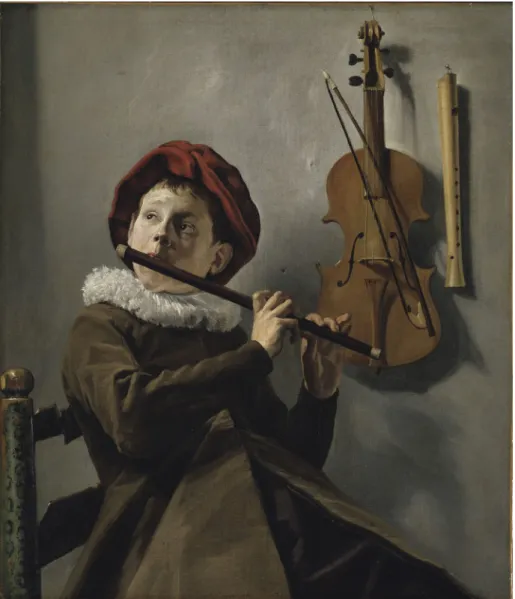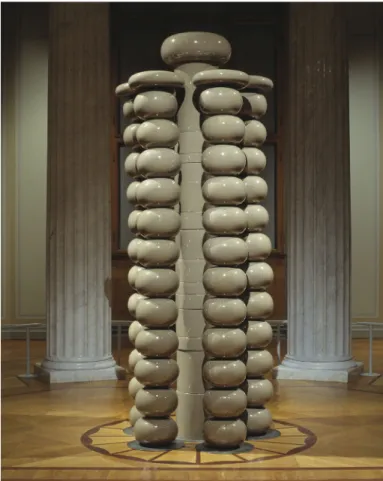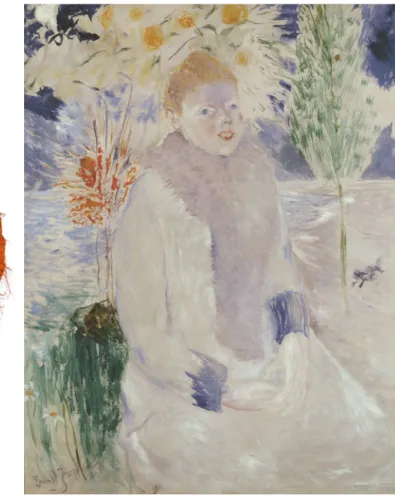Art Bulletin of
Nationalmuseum
Stockholm
Volume 21
Highlights: Famous and Forgotten Art
Treasures from the Nationalmuseum
Mikael Ahlund
Curator, Paintings and Sculpture
15 May – 31 August 2014
Nationalmuseum Image Archives, from Domenico Fetti 1588/89–1623, Eduard Safarik (ed.), Milan, 1996, p. 280, fig. 82 (Figs. 2 and 9A, pp. 13 and 19)
© Pushkin State Museum of Fine Arts, Moscow (Fig. 3, p. 13)
© bpk/Staatliche Kunstsammlungen Dresden/ Elke Estel/Hans-Peter Klut (Figs. 4, 5B, 6B and 7B, pp. 14–17)
© Digital image courtesy of the Getty’s Open Content Program (Figs. 8 and 10B, pp. 18 and 20)
© CATS-SMK (Fig. 10A, p. 20) © Dag Fosse/KODE (p. 25)
© Nasjonalmuseet for kunst, arkitektur og design/ The National Museum of Art, Architecture and Design, Oslo (p. 28)
© SMK Photo (p. 31)
© From the article ”La Tour and Lundberg’s portraits of la princesse de Rohan”, by Neil Jeffares, http://www.pastellists.com/Essays/LaTour_ Rohan.pdf, 2015-09-21, (p. 40)
© The National Gallery, London. Bought, Cour-tauld Fund, 1924 (p. 42)
© Stockholms Auktionsverk (p. 47) © Bukowskis, Stockholm (p. 94) © Thron Ullberg 2008 (p. 108)
© 2014, State Russian Museum, St. Petersburg (pp. 133–134)
© Anhaltische Gemäldegalerie Dessau (pp. 138–139) © Museen der Stadt Bamberg (pp. 140 and 142) © Archive of Thomas Fusenig (p. 141) © Nordiska museet, Stockholm/Karolina Kristensson (pp. 148–149)
the Friends of the Nationalmuseum. Nationalmuseum collaborates with
Svenska Dagbladet and Grand Hôtel Stockholm. We would also like to thank FCB Fältman & Malmén.
Cover Illustrations
Domenico Fetti (1588/89–1623), David with the Head of Goliath, c. 1617/20. Oil on canvas, 161 x 99.5 cm. Purchase: The Wiros Fund. Nationalmuseum, NM 7280.
Publisher
Berndt Arell, Director General
Editor
Janna Herder
Editorial Committee
Mikael Ahlund, Magdalena Gram, Janna Herder, Helena Kåberg, Magnus Olausson and Lidia Westerberg Olofsson.
Photographs
Nationalmuseum Photographic Studio/ Linn Ahlgren, Olle Andersson, Erik Cornelius, Anna Danielsson, Cecilia Heisser, Bodil Karlsson and Sofia Persson.
Picture Editor
Rikard Nordström
to the supply of photographs. Please notify the publisher regarding corrections.
Graphic Design
BIGG
Layout
Agneta Bervokk
Translation and Language Editing
Gabriella Berggren, Martin Naylor and Kristin Belkin.
Publishing
Ingrid Lindell (Publications Manager) and Janna Herder (Editor).
Art Bulletin of Nationalmuseum is published annually and contains articles on the history and theory of art relating to the collections of the Nationalmuseum.
Nationalmuseum Box 16176
SE–103 24 Stockholm, Sweden www.nationalmuseum.se
© Nationalmuseum, the authors and the owners of the reproduced works
exhibitions/highlights
The exhibition Highlights: Famous and Forgotten Art Treasures from the National-museum featured a selection of works from
the Museum’s various collections – many of them sorely missed by the audience whi-le the museum building on Blasieholmen is closed for refurbishment. The exhibi-tion included paintings, sculptures, crafts and design. A large number of works from the 16th century up to today were chrono-logically presented. Early masters, such as Rembrandt, Judith Leyster (Fig. 1), François Boucher, Anne Vallayer-Coster and Clo-dion, were succeeded by later artists such as William Turner, Gustave Courbet, Rosa Bonheur, Auguste Renoir and Berthe Mo-risot, to name but a few. Foreign names were interspersed with Swedish artists such as Elias Martin (Fig. 2), Alexander Roslin, Ulrika Pasch, Marcus Larson, Anders Zorn, Bruno Liljefors, Eva Bonnier, and many others.
Alongside paintings and sculptures, the exhibition gave equal prominence to a rich selection of objects from the Muse-um’s collection of applied art and design, with several key works from the Renaissan-ce up to our own times. Apart from objects such as Meissen porcelain and faïence from Rörstrand and Marieberg, the exhi-bition featured modern design and pieces by contemporary Swedish and internatio-nal crafts designers, including Michael Eden, Eva Hild and Frida Fjellman. Also featured were 1960s and ’70s applied art objects in the collection that have rarely or never before been shown, for instance,
Highlights: Famous and Forgotten
Art Treasures from the Nationalmuseum
Mikael Ahlund
Curator, Paintings and Sculpture
15 May – 31 August 2014
Fig. 1 Judith Leyster (1609–1660), Boy Playing the Flute, 1630s. Oil on canvas, 73 x 62 cm. Nationalmuseum, NM 1120.
also featured a few works that are rarely or never shown at the Museum – obscure but nonetheless captivating art that has not previously been given much attention despite its merits. Thus, the works chosen for the presentation were a motley crew from art history – celebrated masterpieces alternating with forgotten or comparati-vely obscure works. The changed attitude to various works by Rembrandt and other Dutch 17th-century painters over time was discussed, and how this has impacted on their fame.
Changed views on later oeuvres over the past century were also commented upon, exemplified with works by August Strindberg, Ernst Josephson (Fig. 5) and explored in debates, museology research
and museum studies and the discussions about an art history canon over the past decades. With its selection of works and texts, the exhibition focused on the ques-tion of what powers in the past and present influenced and still influence our views on art and art history. The exhibition specifically discussed the historic influen-ce of museums in this proinfluen-cess – not least the Nationalmuseum. The accompanying texts described how individual works had achieved stardom, and discussed works that had once been famed but for vario-us reasons are now more or less forgotten. As a complement to the theme of famous and unknown masterpieces, the exhibition Ettore Sottsass’ so-called Monument to
Mus-tard (Fig. 3) and Magdalena Abakanowicz’s
textile sculpture Abakan (Fig. 4). There was also a separate section on portraits, under the subheading Selfies: Now and Then (see se-parate article on p. 131).
As a complement to the rich selection of famous paintings, sculptures and app-lied art objects, wall texts and the exhibi-tion catalogue asked why some works have grown more well-known and popular than others. Words like “highlight”, “classic” and “masterpiece” were examined. What constitutes a “masterpiece”? Who decides? And how has the attitude to masterpieces changed over the years? The exhibition referred to how these issues had been
Fig. 2 Elias Martin (1739–1818), Landscape with Spruce, c. 1780. Oil on canvas, 115 x 89 cm. Nationalmuseum, NM 4629.
Fig. 3 Ettore Sottsass (1917–2007), sculpture Monument to Mustard, 1969. Tin-glazed ceramic, H. 280 cm. Nationalmuseum, NMK 28/1969.
exhibitions/highlights
ge. The exhibition also included examples of art that was praised from the beginning and has maintained its popularity. Olof Arborelius painted his view of a lake at Engelsberg in 1893, and the painting was bought for the Nationalmuseum collec-tion the following year (Fig. 7). It has been one of the Museum’s most popular pain-tings ever since. Its fame was augmented when it was chosen as the “Sweden Pain-ting” in 1935 by the Swedish Tourist Board and reproduced as such in a plethora of contexts. This painting is also the Muse-um’s most frequently copied work by visi-ting artists and art students.
One of the aims of this exhibition was thus to shed light on the forces that have Carl Fredrik Hill, whose respective
reputa-tions geniuses was not established until well into the 20th century, when their paintings were viewed and reconsidered through the filter of modernism. The vi-sual kinship between modern art and the unique imagery developed by these artists posthumously gave them a prominent position in Swedish 20th-century art his-toriography. Other artists and craftsmen, however, have experienced the opposite. This is true, for instance, of Carl Hjalmar Norrström. His elaborate steel urn from the late-19th century (Fig. 6), which was highly admired by Norrström’s contempo-raries, was disdained in the 20th century and banished to the darkness of the
stora-shaped our views on art and its history and influenced our appreciation of individual works. By means of the selected examples, it demonstrated how museums and other media have identified “masterpieces” and “highlights”, and how opinions change over time. Another primary purpose of this exhibition was to show a rich selection from the Nationalmuseum’s collection – famous and unknown works that were brought out into the light for a while, befo-re the befo-refurbished Nationalmuseum once again opens its doors.
Fig. 4 Magdalena Abakanowicz (b. 1930), Abakan, 1969.
Sisal, woven, H. c. 380 cm, W. 360 cm. Nationalmuseum, NMK 3/1971.
Fig. 5 Ernst Josephson (1851–1907), Portrait of a Lady, 1890s. Oil on canvas, 111 x 87 cm. Nationalmuseum, NM 3603.
Exhibition catalogue
Highlights: Kända och okända konstskatter från Nationalmuseum (Swedish edition);
Highlights: Famous and Forgotten Art Treasures from the Nationalmuseum (English edition)
Nationalmusei utställningskatalog nr 671 (Nationalmuseum exhibition catalogue no. 671) ISBN (Swedish edition): 978-91-7100-849-7 ISBN (English edition): 978-91-7100-850-3
Exhibition curators: Mikael Ahlund and Anders
Bengtsson
Exhibition design: Joakim E. Werning Lighting design: Jan Gouiedo
Exhibition technology and installation: The
Technical Department at Nationalmuseum, under the supervision of Lennart Karlsson
Chief conservators: Britta Nilsson, Maria Franzon
and Nils Ahlner
Exhibition manager: Anneli Carlsson Exhibition coordinator: Lena Granath Education officer: Helén Hallgren Archer
Fig. 6 Carl Hjalmar Norrström (1853–1924), Urn with cover, 1893. Steel, gilded, etched and blued, H. 133 cm, W. 54 cm. Nationalmuseum, NMK 21/1894. Interior from the exhibition Highlights: Famous and Forgotten Art Treasures from the Nationalmuseum.
Fig. 7 Olof Arborelius (1824–1915), Lake View at Engelsberg, 1893. Oil on canvas, 81 x 120 cm. Nationalmuseum, NM 1472.



